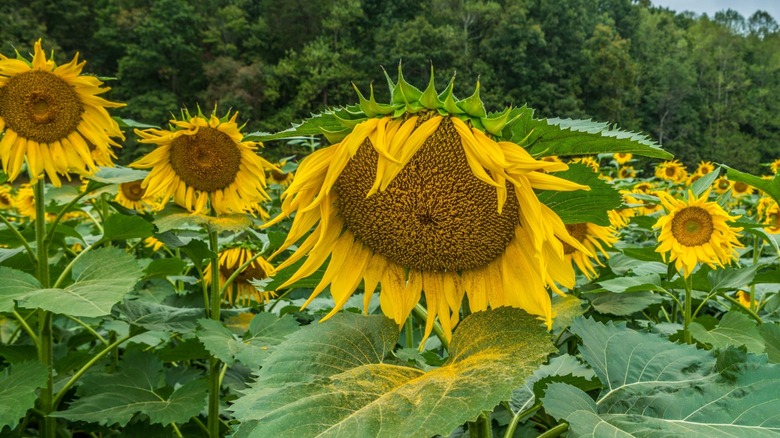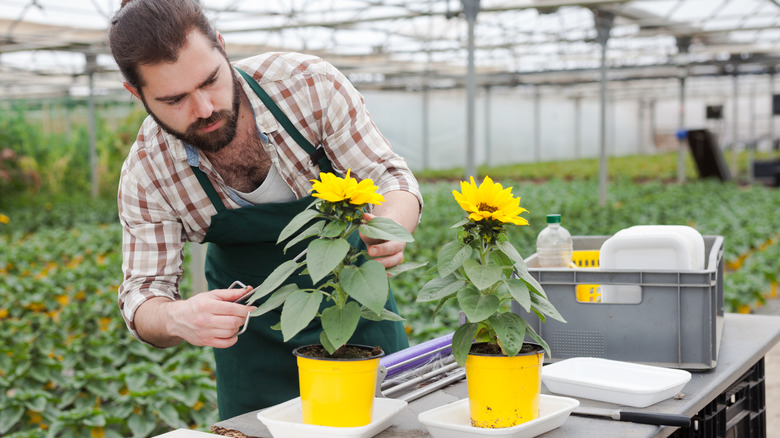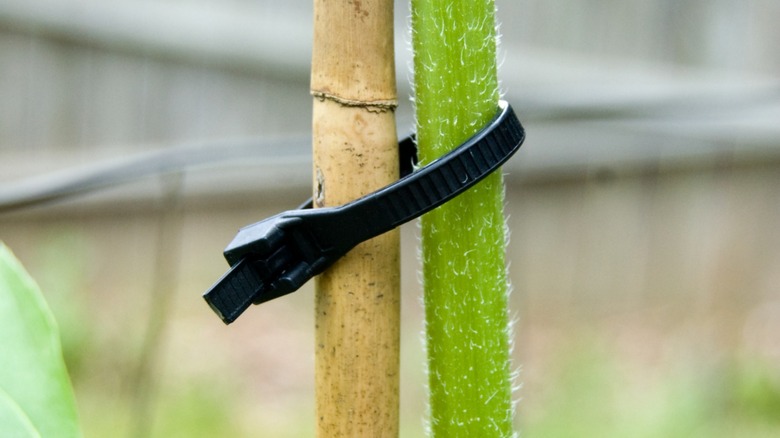Why Your Sunflowers Are Drooping (And What To Do About It)
If you notice that your sunflowers have begun to droop their sunny yellow heads, this could be quite surprising, especially since you're used to seeing them follow the sun across the sky. Trying to figure out why this occurs can sometimes be a challenge, and the reason might not be what you initially think. There are many reasons this could be happening including transplant shock, issues with watering needs, and almost being time to harvest. Luckily, once you learn about some of the most common reasons this might be happening, it's usually fairly easy to fix the issue.
Sunflowers are easy to grow, and birds and pollinators love them. They watch the sun by way of a process called heliotropism. In other words, their flower-faces seek out the position of the sun throughout the day and move along with it. Each flower head can produce up to 2,000 sunflower seeds. Just having a few sunflowers in your yard seems to brighten up everything around them. However, when they start to droop, it's usually a sign that something's wrong, unless it's the end of the season. If your plant starts drooping and the petals turn brown at the end of summer or in the fall, you can begin drying out the seeds for planting next year or for consuming as a snack.
Transplant shock
If you've recently transplanted your sunflower to another location or moved it outdoors, this could be the reason it has started to droop. Sunflowers are relatively hardy, easy to grow outdoors in the garden, and will thrive in a variety of conditions. They don't generally need fertilizer and are happy in full or dappled sunlight. They also grow well in a container that's large enough for them to grow into. But their roots are sensitive, and they don't always transplant well. Even just moving them from an indoor pot to an outdoor garden requires a period of time to acclimate, called hardening-off. This involves placing the pot outdoors for a few hours a day for a week to help them get used to the change in location.
With all of this in mind, sow outside and from seeds whenever possible. If you start them indoors, be sure they're in a container that they can fully grow into and one that can be moved outside when the time comes. Try to avoid transplanting into the ground at all, and be sure to slowly acclimate them over several days before leaving them outdoors permanently. Once they're safely acclimated, they should perk their heads up like normal.
Not enough water, stalks need support, or pests
Another common reason your sunflower could be drooping is that it's not receiving enough water. Typically, when sunflowers are healthy, they store enough water in their stalks to hold up the weight of their flower heads without drooping. If you've had a dry spell, you might need to water more often. You should keep them regularly watered throughout the growing cycle, and if they're drooping because they need water, the leaves will start to droop as well. Don't worry; once replenished, they'll perk right up.
If it's not a lack of water, try adding some support to the stalks to help ease their burden. Sunflowers may start to droop towards the end of their life cycle, even if they're not quite ready for harvest. If it's about that time, that's your sign to give them some extra support. Other than these common reasons, there's also one other possibility. Check the color of the leaves for yellowing. If they're turning yellow, inspect them with a magnifying glass for pests like spider mites. If you find any, apply neem oil to all surfaces of the plant, and they should stop drooping their heads.


